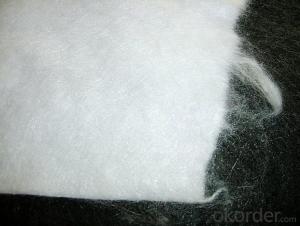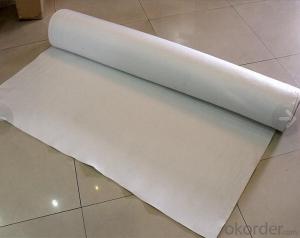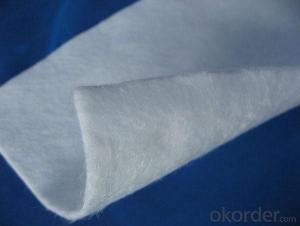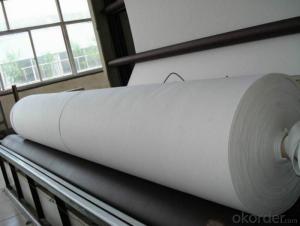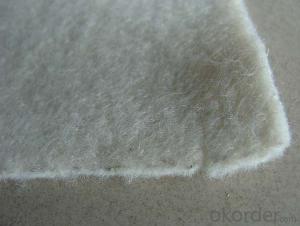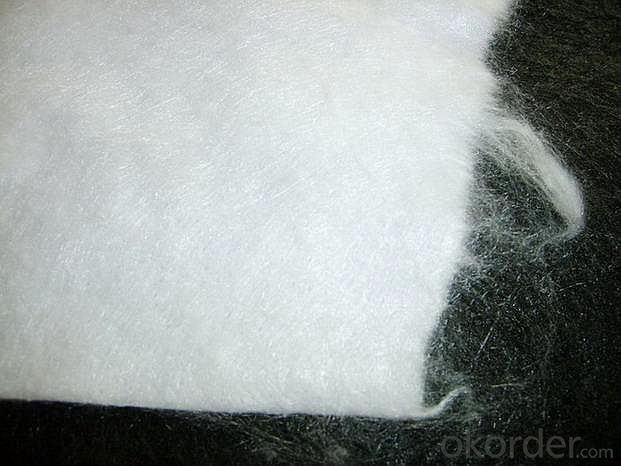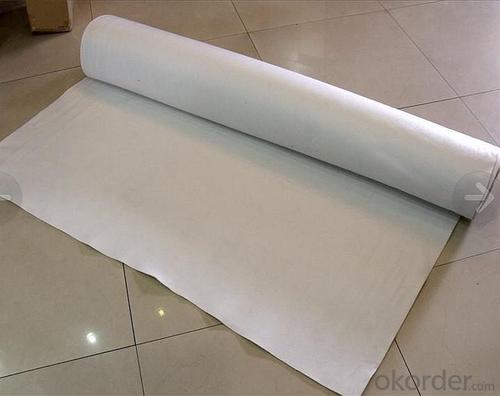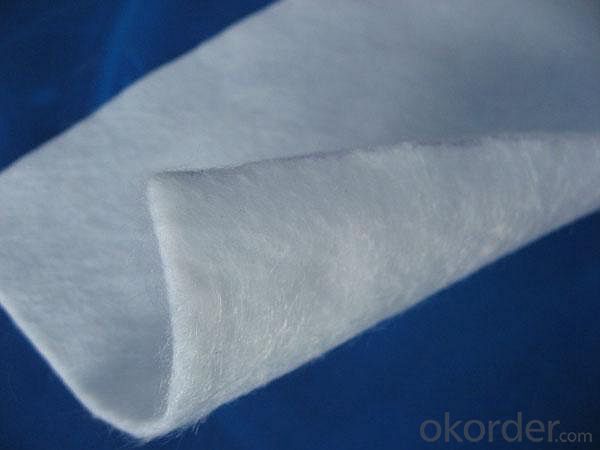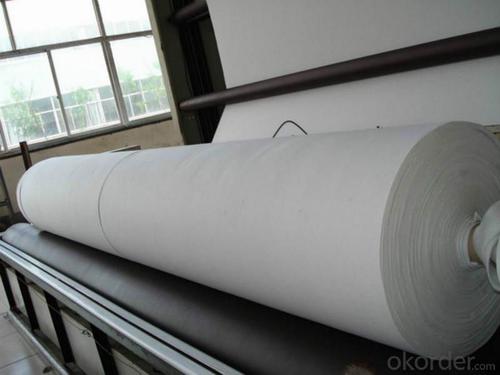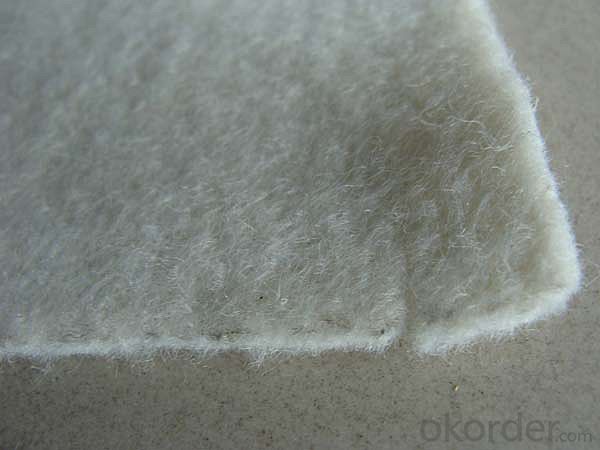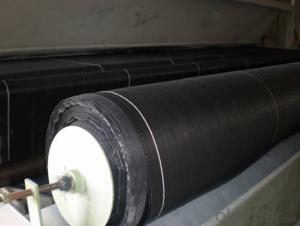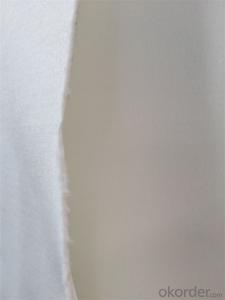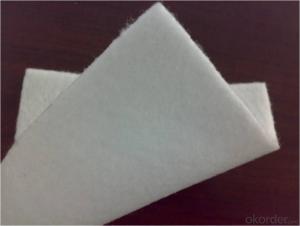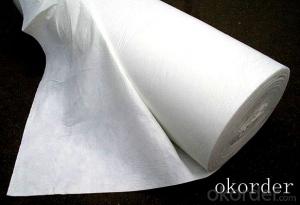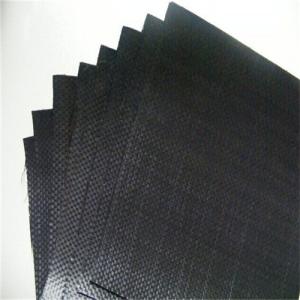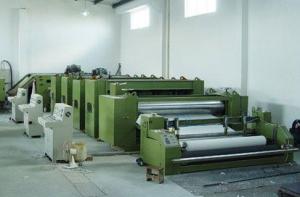150 G/M2 Nonwoven Geotextile Fabric for Road Construction - 1000g
- Loading Port:
- China main port
- Payment Terms:
- TT OR LC
- Min Order Qty:
- 1000 m²
- Supply Capability:
- 1000000 m²/month
OKorder Service Pledge
OKorder Financial Service
You Might Also Like

Features and Benefits
Nonwoven structure, providing excellent surface friction and built-in elongation
Effective filter, with tight pore size (AOS=70) and high permittivity
High tensile strength, with excellent puncture and tear resistance
Range from 3.2 oz/sy (109g/sm) – 16.0 oz/sy (543g/sm)
Geotextile uses:
Separate: Geotextile when used as a separation layer prevents two different fill materials such as aggregate and soil from combining. When used correctly the geotextile will increase the life span of the civil project, allowing the two separate layers to perform as designed for longer.
Protection: Geotextile when used as a protection layer acts as a cushioning barrier between the geosynthetic lining system and other layers of the dam or landfill cell. Generally the larger mass rolls of geotextile provide the best cushioning protection. As a protection barrier it helps prevent puncturing and leaks from external forces coming into contact with the liner.
Our Service
1.On a regular basis or as per your request,we entrust national testing agencies to conduct quality inspections
2. Strictly in accordance with the ISO9001-2008 international quality system standard,we monitor and manage the whole process throughout production,quality testing,and measurement to ensure product quality
3. For quality-related construction delay or substandard construction(except for damage or losses due to customer’s responsibility or irresistible natural disasters),we have refunding,replacement,and repair services.We will respond to customers’ feedbacks on quality issues within 24 hours.
FAQ:
Q: What kind of payments does jenor support?
A: T/T, L/C, Cash are accepted.
Q: Do you charge for the samples?
A: Accordeing to our company policy, the samples are free, we only charge the freight fee. And we will return the freight fee during the next order.
Q: Can you produce according to customers' design?
A: Sure, we are professional manufacturer, OEM and ODM are both welcome.
Q: Do you have other products?
A: Yes, please check the pictures:
- Q: How do geotextiles help with filtration in geosynthetic clay liners?
- Geotextiles help with filtration in geosynthetic clay liners by acting as a barrier to prevent the migration of fine particles while allowing water to pass through, thus enhancing the filtration efficiency and reducing the potential for clogging.
- Q: Contracted geotextile impermeable membrane laying artificial one square how much money
- Big bag of 4 yuan / square, I am specializing in the production of geotechnical materials
- Q: Do you need to suture the lower geotextile of composite geomembrane?
- Under normal circumstances without suture (stretch, overlap to a piece like), just the geomembrane welding, the top layer of geotextile with a hand sewing machine sewing can be geotextile as a protective layer of geomembrane, to protect the impermeable layer In order to reduce the UV radiation, increase the anti-aging performance, it is best to use the laying method of laying.In the construction, the first use of smaller diameter sand or clay to find the base surface, and then laying, Too tight, buried at both ends of the soil part of the corrugated, and finally in the shop on the two cloth a film with fine sand or clay shop layer of 10cm over the layer. Puzzle 20-30cm stone (or concrete prefabricated block) For the protection of the layer.When the construction, should try to avoid the stone directly hit on the best side of the film side of the protective layer of the construction of the two cloth a film and the surrounding structure should be connected with expansion bolts and steel plate pressure bar anchor, The connection part to brush the emulsion asphalt (2mm thick) bonding, to prevent the occurrence of leakage. Construction joint processing is a key process, a direct impact on seepage effect. General seam way: ① lap: lap width Should be greater than 15cm; ② heat welding: suitable for slightly thick geomembrane substrate, weld lap width of not less than 5C M
- Q: What are the factors to consider when designing geotextile-reinforced walls?
- When designing geotextile-reinforced walls, there are several factors that need to be considered. Firstly, the type and strength of the geotextile material must be chosen carefully to ensure it can effectively withstand the loads and stresses imposed by the wall's design and the soil conditions. Secondly, the wall's geometry and dimensions need to be determined, taking into account factors such as the height of the wall, the slope angle, and the overall stability requirements. Thirdly, the soil conditions and properties at the site should be thoroughly examined to understand their impact on the wall's design. This includes factors such as soil type, compaction level, moisture content, and shear strength. Additionally, the design should account for potential environmental factors such as rainfall, groundwater levels, and potential surcharges or seismic activity that could affect the stability of the wall. Furthermore, the construction and installation process needs to be considered, ensuring that the geotextile reinforcement is properly installed and securely connected to the wall structure. Overall, a comprehensive analysis of these factors is necessary to ensure the successful design and construction of geotextile-reinforced walls that are safe, durable, and effective in their intended purpose.
- Q: The amount of geotextile drained pipe drape
- According to the two sides agreed by the measurement method, such as by the extension of the package or the expansion of the area can be calculated, you can also agreed to package a tube how much money. Generally calculated by the expansion of the area is more reasonable, because the size of the pipeline.
- Q: What are the key considerations for geotextile installation in cold climates?
- Some key considerations for geotextile installation in cold climates include selecting a geotextile material that is designed for cold weather conditions, ensuring proper site preparation and ground stabilization, protecting the geotextile from frost heave or ice damage, and taking into account the potential for snow accumulation and removal on the geotextile surface. Additionally, considering the impact of freeze-thaw cycles and designing proper drainage systems are crucial for successful geotextile installation in cold climates.
- Q: What is the lifespan of geotextiles?
- The lifespan of geotextiles can vary depending on various factors such as the quality of the material, the type of application, and the environmental conditions. However, on average, geotextiles are designed to last anywhere from 15 to 25 years.
- Q: How do geotextiles help in reducing the settlement of structures on soft soils?
- Geotextiles help in reducing the settlement of structures on soft soils by providing a stable and reinforced foundation. They act as a barrier between the soil layers, distributing the load evenly and preventing excessive settlement. Additionally, geotextiles improve the soil's drainage and filtration capabilities, allowing water to permeate and preventing waterlogging, which can further contribute to settlement.
- Q: Can geotextiles be used for reinforcement of pipeline trenches?
- Yes, geotextiles can be used for the reinforcement of pipeline trenches. They provide stability and support by preventing soil erosion and minimizing the movement of soil particles. Additionally, geotextiles can enhance the overall performance and longevity of the pipeline by reducing stress on the pipes and preventing damage caused by shifting soil.
- Q: Do geotextiles have any environmental benefits?
- Yes, geotextiles have several environmental benefits. They help to control erosion by stabilizing soil and preventing sediment runoff, which protects water quality and aquatic ecosystems. Geotextiles also promote vegetation growth by providing a stable base for plant roots to establish, aiding in the restoration of degraded areas. Additionally, they can be used in waste management to prevent the leaching of harmful substances into the soil and groundwater. Overall, geotextiles play a crucial role in sustainable land management and have positive environmental impacts.
Send your message to us
150 G/M2 Nonwoven Geotextile Fabric for Road Construction - 1000g
- Loading Port:
- China main port
- Payment Terms:
- TT OR LC
- Min Order Qty:
- 1000 m²
- Supply Capability:
- 1000000 m²/month
OKorder Service Pledge
OKorder Financial Service
Similar products
Hot products
Hot Searches
Related keywords
